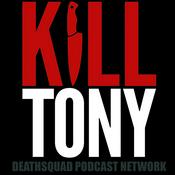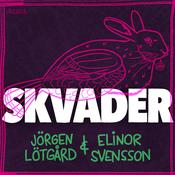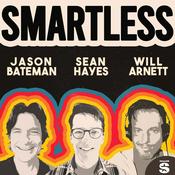273 avsnitt

Hate Watching A Very Jonas Christmas Movie: Holiday Hype or Hollow Cheer
2025-12-17 | 1 h 22 min.
Send us a textA leather jacket Santa, a melted plane, and a train to the wrong city—on paper it sounds wild. We hit play on the Jonas Brothers holiday special expecting cozy carols and earned nostalgia, and got a glossy tour of Europe where money and magic wipe away every consequence. The result is a Christmas road movie with no real road and no reason to hurry home, propped up by a handful of good jokes and one romance beat that almost redeems the trip.We unpack why the core premise falls flat: when passports vanish but a new jet appears in minutes, tension dies. Santa as a snarky saboteur doesn’t mentor or challenge the brothers; he detonates obstacles instead of nudging growth. That choice undercuts the holiday grammar that makes films like Home Alone and Elf endure—clear rules, genuine stakes, and heart over spectacle. We talk lip sync problems, songs that feel stapled on, and a Home Alone musical gag that somehow works despite a convoluted setup. Then we trace the character arcs that should have mattered: Kevin’s desire for a real vocal moment, Nick’s control streak, Joe’s playboy reputation versus a surprisingly sweet connection with Lucy.It’s not all coal. We call out the lines that hit, the chemistry that clicks, and the cleaner version hiding in plain sight: fewer explosions, more constraints, and music that actually drives character and story. A better structure would give each brother a problem to own and solve, with Santa as a wry guide rather than a wrecking ball. Along the way we detour into Rotten Tomatoes whiplash, holiday ranking sanity checks, and a couple quick recs—yes, Knives Out fans, we see you.If you’ve watched the special, hit play and argue with us; if you haven’t, we’ll help you decide if the cozy vibes outweigh the plot holes. Subscribe, drop a review, and tell us: did you laugh, cringe, or secretly love it anyway?Written lovingly by AIBe our friend!Dan: @shakybaconTony: @tonydczechAnd follow the podcast on IG: @hatewatchingDAT

Hate Watching the Truman Show: Truman, Tinfoil, And TV Lies
2025-12-10 | 1 h 29 min.
Send us a textWhat happens when a brilliant concept crumbles under its own weight? We dive headfirst into The Truman Show and pull at every loose thread: a dome you can see from space, a moon that doubles as a control booth, rain on a dimmer, and a hero who behaves like a normal adult instead of someone raised by a stage. We’re not here to nitpick for sport—we’re asking how this story should work if it wants to be a satire, a thriller, or a character drama, and why it lands in a mushy middle where none of those genres truly sing.From Plato’s Cave to product placement, we walk through the philosophical promise the film hints at but rarely honors. If every relationship is an advertisement, then lean in: make the world a nonstop sales pitch where Truman’s wife, friends, and neighbors are always selling, and his dawning awareness is inevitable and painful. If it aims to be a thriller, lock the world’s rules, tighten the surveillance, and make each escape attempt a credible chess match. If it wants character drama, reshape Truman’s mind—how he understands weather, intimacy, trust—so his confusion feels like a life-long conditioning rather than a week of convenient glitches. We also dig into the ethics that the film shrugs off: consent inside a staged marriage, the grotesque idea of a “live conception,” and the hollow claim that “he can leave anytime” while hazmat teams haul him home.We revisit standout sequences—the falling light, the radio bleed, the traffic loop, the boat into the painted horizon—and ask why these moments should soar but don’t. Ed Harris brings steel as Kristof, yet the god-voice scene undercuts itself by offering a safe return no human could accept. And that final audience beat, the channel flip after 30 years, says more about the movie’s uncertainty than about us. Along the way, we compare the show’s fantasy to today’s reality TV, from the quiet sincerity of early Love Island seasons to the engineered chaos that drives modern engagement, and the extraordinary longitudinal honesty of the Seven Up series. Knowing what audiences actually watch makes the Truman premise feel even less plausible.Stick around to hear what we’re queuing up next—yes, a holiday curveball—and where we think televised storytelling goes from here as streamers consolidate and theater windows shrink. If you enjoy a spirited teardown with a blueprint for a better version, hit follow, leave a review, and share this with a friend who still quotes “Good afternoon, good evening, and good night.” Then tell us: would you stay in the dome or walk through the exit?Written lovingly with AIBe our friend!Dan: @shakybaconTony: @tonydczechAnd follow the podcast on IG: @hatewatchingDAT

Hate Watching The Pickup: A Monkey, A Ring, and Zero Stakes
2025-12-04 | 1 h 27 min.
Send us a textThe trailer had us hopeful; the movie had us baffled. We dive into The Pickup and pull apart why a slick heist premise, a stacked cast, and a veteran director still yield a comedy-thriller with no real stakes and a whole lot of shrugs. From the opening bank “meet-cute” with a drawn gun that triggers zero fallout to an armored-truck chase that looks slow because it’s shot too wide and scored too flat, we track how craft choices drain momentum and mute laughs. Eddie Murphy sets up a character with a clear goal, Pete Davidson aims for endearing idiot energy, and Kiki Palmer arrives with a revenge motive that should add pathos—yet none of it bonds into chemistry or tension.We spend time on the filmmaking: why long lenses and tighter coverage sell speed; how music should escalate emotion; and what happens when geography, cause, and effect get fuzzy. We also examine character math. Playing “dumb” requires sharp intention, but Travis quips from the sidelines while the script swears his math brain matters. Russell’s anniversary ticking clock evaporates the moment it’s convenient. A hostage check-in rule is established then never used. When consequences vanish, audience investment goes with them. Still, there are bright spots: a brutally funny run-over gag, a perfectly human “that went terribly” phone bit, Eva Longoria’s decisive car moment, and Marshawn Lynch trying to manufacture laughs out of thin air.The heist logic gets our full audit too: RFID hand-waving, casino cash tracking, schedules, and how laundering would actually work. We talk pancakes, butt jokes, and why romance beats fall flat when performance doesn’t carry the feeling. If you love action-comedy with punch and pace, this breakdown shows why The Pickup doesn’t deliver—and what would’ve fixed it. Stick around to hear what we’re watching next as we tee up a revisit of The Truman Show.Enjoyed the episode? Follow, rate, and share with a friend who loves a good takedown. Got a spiciest plot hole or favorite bad line from The Pickup? Drop it in a review and tag us so we can feature your take.Be our friend!Dan: @shakybaconTony: @tonydczechAnd follow the podcast on IG: @hatewatchingDAT

Hate Watching Timeline: Dumb, Fun, Semi-History
2025-11-29 | 1 h 26 min.
Send us a textA time machine that behaves like a fax, a grenade that hops centuries, and an ear that turns into destiny—this conversation goes deep on why Timeline is both ridiculous and ridiculously enjoyable. We break down the movie’s soft science with a smile, from wormholes that sometimes sync to the minute to medallions that only work when the plot says so. Then we zoom in on what actually sells the ride: Gerard Butler’s early-era charisma, Anna Friel’s spark as Claire, and Michael Sheen chewing the castle tapestries with villainous delight.We also get practical about medieval mayhem. The siege stretches bring real texture—trebuchets thudding, moats igniting, “night arrows” cutting the dark—and Greek fire delivers a rare Chekhov’s payoff that feels satisfyingly tactile. Does the movie look like TV sometimes? Sure. Do the costumes read like Ren fair fresh? Absolutely. But when a sword drops in front of a hiding hero, or a tunnel cracks open behind a monastery wall, the film finds momentum that feels genuinely cinematic. Along the way, we test the internal logic, laugh at the paradoxes, and admit the obvious: fun can trump coherence when performances and set-pieces click.Our side quests matter too. We weigh nostalgia’s sway with a Goonies, Lost Boys, and Monster Squad detour, argue about changing history versus curating legend, and even share Thanksgiving stuffing tips because timing is everything. The finale’s sarcophagus epilogue reframes the whole story as myth-making, and that’s where we land: if legend is the point, strict causality can step aside. Hit play to hear us debate, cackle, and celebrate the small victories that make sloppy sci-fi sing. If you enjoy the show, leave a comment, give us a thumbs up, or subscribe—then tell us your favorite “good bad” movie.Written lovingly by AIBe our friend!Dan: @shakybaconTony: @tonydczechAnd follow the podcast on IG: @hatewatchingDAT

Hate Watching Land of the Lost: Big Brain T-Rex, Tiny Plot
2025-11-19 | 1 h 19 min.
Send us a textDinosaurs, portals, and a chorus line of pterodactyls should be a slam dunk. We dove into Land of the Lost to figure out why a movie with so many toys keeps losing the game—and how a few smart changes could have turned chaos into comedy that sticks. We start with the core misfire: Will Ferrell is asked to play a straight-man scientist and a clueless clown at the same time, which erases any clean arc and drains the stakes from every set piece. Absurd can be brilliant when the rules are tight; here, the rules shift whenever a gag needs help. One scene uses a waterfall as a portal, another opens a door in midair, and the “land of lost things” includes stuff that was never lost. Without consistent logic, action stops dead so jokes can breathe, and then the jokes run out of air.There are bright spots. Danny McBride keeps landing sly, character-driven lines because his POV is clear: selfish bluster that occasionally flips into loyal friend. The sleestaks’ intentionally rubbery vibe nods to the original show in a way we liked, and a handful of bits nearly work: the “big brain” T‑Rex who understands insults, the nitrogen catapult that wants to homage Jaws, and the fake-sleep dodge before a dangerous egg run. The problem is follow-through. Setups don’t pay off, tension stalls for monologues, and the movie undercuts its own best ideas. Imagine a version where Ferrell’s scientist maps portal patterns to get home, the T‑Rex feud resolves with a comedic apology instead of a digestive punchline, and Holly’s language skill consistently solves crystal puzzles rather than a lucky belt-reflection trick.We don’t just roast; we rebuild. Give the world three simple rules, lock each character’s goal, and let the bits escalate instead of pause. The result is a fun, rule-bound playground where McBride’s chaos sharpens Ferrell’s growth and the creature gags actually matter. If you’re into comedy craft, story structure, and the joy of almost-great ideas, you’ll have a blast with this one. Hit play, then tell us your favorite broken setup—and how you’d fix it. And if you’re new here, subscribe, drop a review, and share this with a friend who loves a good movie autopsy.Written lovingly by AIBe our friend!Dan: @shakybaconTony: @tonydczechAnd follow the podcast on IG: @hatewatchingDAT
Fler podcasts i Komedi
Trendiga poddar i Komedi
Om Hate Watching with Dan and Tony
Lyssna på Hate Watching with Dan and Tony, VAFALLS och många andra poddar från världens alla hörn med radio.se-appen

Hämta den kostnadsfria radio.se-appen
- Bokmärk stationer och podcasts
- Strömma via Wi-Fi eller Bluetooth
- Stödjer Carplay & Android Auto
- Många andra appfunktioner
Hämta den kostnadsfria radio.se-appen
- Bokmärk stationer och podcasts
- Strömma via Wi-Fi eller Bluetooth
- Stödjer Carplay & Android Auto
- Många andra appfunktioner


Hate Watching with Dan and Tony
ladda ner appen,
börja lyssna.





























